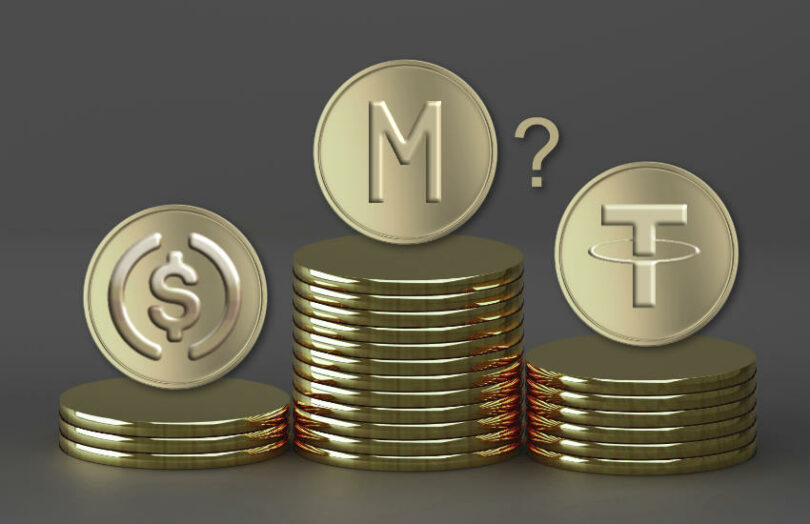Google wasn’t the first successful search engine. Nor was Facebook the first runaway social network. Tether and Circle’s USDC might be considered first generation stablecoins. Could a new wave of stablecoins usurp them? Tether reported a Q1 profit of $4.52 billion, a runaway success for a tiny team. The question is whether that is sustainable.
Luca Prosperi, CEO of M^0 Labs, believes he has the formula for the next generation of stablecoins. He makes grand claims such as the M^0 protocol becoming the central bank of stablecoins. While big visions are not unusual in the cryptocurrency world, there are hints that this one might be more than hot air. For starters, the protocol infrastructure has only just launched and has no material traction, yet it managed to raise two funding rounds of $22.5 million and $35 million, with the latter led by Bain Crypto with participation from major market makers.
Two other aspects grabbed our attention. Firstly, the M^0 protocol is a decentralized one. The M stablecoin issuance is federated to multiple approved ‘minters’ who are expected to comply with their local regulations.
Stablecoin incentives
Secondly, today’s major stablecoin issuers, Circle and Tether, appear to retain the majority of the interest earned on their stablecoin reserves. That’s while others do the work.
Consider crypto exchange Binance. At the start of June 2024, Binance held $25 billion in Tether, much of it on behalf of clients. Tether earns 5% + on the $25 billion. What if another stablecoin came along and shared most of that with Binance, say 4%? That’s worth $1 billion a year to Binance.
The M^0 protocol shares most of the interest revenues with the approved distributors referred to as Earners.
This model applies equally to market makers. While Tether is currently the coin of choice for traders, if market makers are formally incentivized to hold a different stablecoin, that could change. It’s not a coincidence that several of the latest M^0 backers are market makers: Galaxy, Wintermute, GSR and Caladan.
However, that’s not to say that Tether and USDC don’t distribute rewards, they’re perhaps more ad hoc.
Coinbase was a co-founder of the USDC stablecoin, although it’s now entirely controlled by Circle. Coinbase pays the MakerDAO stablecoin protocol 2.6% on some of MakerDAO’s USDC holdings (the USDC cannot be re-lent).
Turning to Tether, it makes loans to crypto firms, a kind of soft reward. When it announced its spectacular 2024 Q1 $4.5 billion revenues, the CEO commented on X that the net profit was closer to $1 billion. Some of the difference could be incentives.
With decentralization and incentives as distinctive M^0 features, we asked Mr Prosperi what he thinks sets M^0 apart from other new stablecoin projects. He responded it’s the all star team, the vision, and the depth and quality of its investors. Prosperi himself has a strong resumé with stints at Oliver Wyman and Morgan Stanley. He was also involved in the MakerDAO stablecoin protocol, alongside one of his co-founders who participated in the protocol from the early days. Last year M^0 recruited Circle’s VP of Product for Stablecoins, Joao Reginatto, who was with the firm for 8 years.
But the vision is the interesting aspect.
The M^0 vision
On the face of it, the M^0 protocol looks like a potential competitor to Tether and USDC with added decentralization and incentives. While the M stablecoin’s reserves are in Treasuries, the model more closely resembles MakerDAO, the protocol that started out by over-collateralizing Ether deposits and minting US dollar stablecoins, DAI. Today the collateral of the third largest stablecoin (market cap $5.3bn) is far more diverse with various cryptocurrencies making up less than half.
The concept of distributing the minting harks from MakerDAO. Previously, others have referred to the Maker protocol as the central bank of DeFi because it aims to create a non volatile asset. Mr Prosperi described Maker as a centralized repo window. He used the same terminology to describe the M^0 protocol.
“We want to create an infrastructure where many can come, access this centralized repo window and just mint the same coin, in the same way many commercial banks access the central bank and mint the same dollar,” said Mr Prosperi.
He believes that a stablecoin like USDC is more of a payment product, which is just one function of money.
With USDC he said “the backend of money creation is untouched. We are reinventing the way you can actually create money in a way more transparent way, bypassing the legacy banking system.”
“We have the ambition to reinvent the whole stack,” he added. “The ambition is reinventing monetary systems rather than creating a payment product.”
Banking system exposure
In his view, Circle is very exposed to the banking system. Circle notoriously had a de-pegging event in March 2023 when Silicon Valley Bank collapsed. That involved $3.3 billion of its cash balance out of $43 billion in reserves.
Prosperi highlighted that a sizeable chunk of USDC’s reserves are not in Treasuries but in reverse repo (56% in April 24, sometimes over two thirds). In other words, Circle (or BlackRock on its behalf) lends the cash to banks which secure the loans with Treasuries. Hence, it has credit exposure to banks even if the risk is covered by Treasuries. While that seems fine, there are periods when the entire system is fragile. The Basel Committee recently considered whether to allow reverse repo of reserves of eligible stablecoins. Eventually it said it was ok provided they are over collateralized.
As Mr Prosperi put it, “Banks are thin margin, 20 x levered institutions. 99% of the time it works. Sometimes it doesn’t.” In his view, it’s hard to optimize for both liquidity and solvency, and M^0 is choosing solvency. It won’t use repo or reverse repo. Initially all reserves will be in Treasuries.
The desire to avoid banks partly comes from Mr Prosperi’s work experience investing in bank debt. He also doesn’t believe “they’re necessary any longer”. There’s another very crypto angle. “We are building for a future that exists mainly on chain,” he said.
No blacklists at the core design
Many mainstream stablecoins support freezing or blacklists, including Tether and USDC. “Having a blacklisting functionality at the core of a stablecoin contract is absolutely devastatingly terrible design,” said Mr Prosperi.
He said that’s why “most” on chain projects adopt the DAI, because they can’t afford to have an external switcher. And it’s why the initial DAI collateral was Ether despite its volatility.
If a particular jurisdiction requires a freeze functionality, it’s possible for a local M issuer to add another layer. Effectively they’d create a wrapped version of the M stablecoin within that jurisdiction that would avoid impacting everybody else.
Beyond the eurodollar
Many stablecoin issuers don’t like the ‘stablecoin’ term. A cryptodollar is a popular alternative. Prosperi was keen to emphasize that the M stablecoin targets the eurodollar market, the offshore dollar market.
A natural question is what about the future? Would there be an M Euro? That’s not Prosperi’s vision, but as the protocol’s governance decentralizes, his influence will reduce.
If you look at web3 so far, the dollar is dominant with blockchain transcending borders. Prosperi believes the dollar’s dominance will persist for some time. However, 20 years down the line he envisions a basket, a mix of international currencies and cryptocurrencies. Now one can see shades of Facebook’s Diem and MakerDAO combined.
He also sees it coexisting with CBDCs because they bypass the commercial bank model. One of Prosperi’s comments was “If we reach the ceiling of the supply of Treasuries for the dollars, it means we’ve done a pretty good job.”
It’s far too early to predict whether the M^0 protocol represents the second wave of stablecoins. One area that’s likely to become more prominent is the incentives offered to stablecoin distributors.
Ledger Insights Research has published a report on bank-issued stablecoins and tokenized deposits featuring more than 70 projects. Find out more here.



 (@paoloardoino)
(@paoloardoino) 



